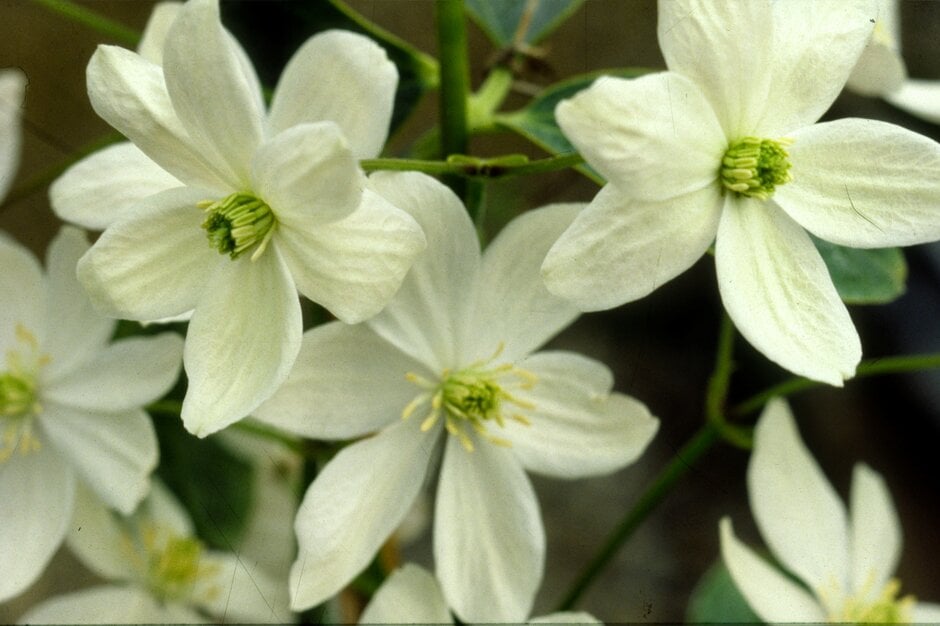Size
Ultimate height
4–8 metresTime to ultimate height
5–10 yearsUltimate spread
2.5–4 metresGrowing conditions
Moisture
Moist but well–drainedpH
Acid, Alkaline, NeutralColour & scent
| Stem | Flower | Foliage | Fruit | |
| Spring | White | |||
|---|---|---|---|---|
| Summer | ||||
| Autumn | ||||
| Winter |
Position
- Full sun
- Partial shade
Aspect
South–facing or West–facing
Exposure
Sheltered Hardiness
H3Botanical details
- Family
- Ranunculaceae
- Native to GB / Ireland
- No
- Foliage
- Evergreen
- Habit
- Climbing
- Potentially harmful
- Skin irritant. Wear gloves and other protective equipment when handling. Pets (rabbits): Harmful if eaten. For further information and contact numbers regarding pets, see the HTA guide to potentially harmful plants
- Genus
Clematis can be deciduous or evergreen shrubs or herbaceous perennials, mostly climbing by twining leaf-stalks, and often with showy flowers. Some have attractive fluffy seedheads in autumn
- Name status
Accepted
- Horticultural Group
- Armandii Group clematis are evergreen woody climbers with leathery leaves and single white or pink flowers, in late winter and spring, in the leaf axils of the previous year's growth
How to grow
Cultivation
Sheltered spot in sunny site in well drained soil. Roots and base of plant best in shade. See clematis cultivation for more advice
Propagation
Propagate by semi ripe cuttings in early summer, or layering in late winter or early spring.
Suggested planting locations and garden types
- Cottage and informal garden
- Mediterranean climate plants
- Flower borders and beds
- Wall side borders
- Hedging and screens
Pruning
Pruning (clematis) group 1 Prune after flowering but only if necessary to keep its space
Pests
May be susceptible to aphids, snails and caterpillars; petals may be eaten by earwigs
Diseases
May be susceptible to honey fungus (rarely), clematis wilt and clematis slime flux
Get involved
The Royal Horticultural Society is the UK’s leading gardening charity. We aim to enrich everyone’s life through plants, and make the UK a greener and more beautiful place.
